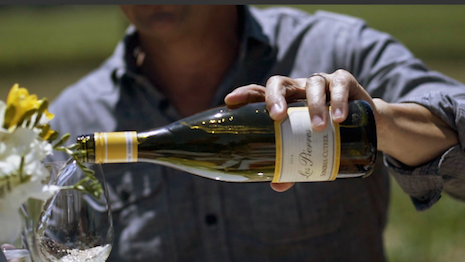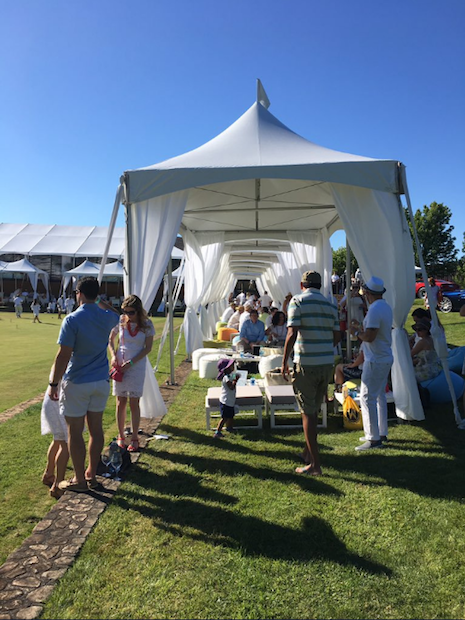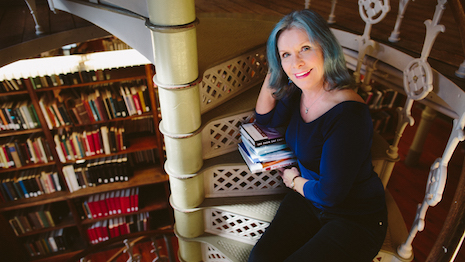 Sonoma-Cutrer Vineyards immerses its customers and visitors into the wine-making and savoring experience. Image credit: Sonoma-Cutrer
Sonoma-Cutrer Vineyards immerses its customers and visitors into the wine-making and savoring experience. Image credit: Sonoma-Cutrer
By Pamela N. Danziger Millennials are on the cusp of becoming the greatest wine-drinking generation in history. But to date, they have been slow to migrate toward higher-priced wines. The problem is profound for wine producers, especially those at the luxury end of the market. They have largely refined their marketing and product selections to appeal to previous generations and left behind the millennials who bring new expectations and points of view about wine. “What seems to be happening is the wine companies have figured out how to take brands and position them for boomers and Gen-Xers, while ignoring the needs of the new younger consumer,” said Rob McMillan, founder and executive vice president of Silicon Valley Bank’s wine division. In his role leading the nation’s premier provider of financial services to the United States fine wine business, Mr. McMillan is the preeminent expert on the wine industry and authors the annual “State of the Wine Industry” report. Because of that, he is the man I turned to get an understanding of how to help premium wine brands reach their potential with the younger generation. X marks the spot Like every other consumer market, the wine industry is facing a generational shift, as the huge baby boom generation moves out and the even bigger millennials move in as the primary target customer. But, now, millennials are largely the hope on the horizon, as the much smaller Gen-Xers are the prime high-spending consumers. “The Gen-Xers are the center of the teeter-totter,” McMillan said. “They are holding up the retail sales. As we see boomers retiring, the same number of financially disadvantaged millennials are coming into the potential market, who by every measure are not expected to have the same opportunities as boomers had. “Due to delays in careers, there is a pothole in consumer spending,” he said. Complicating the scenario for wine marketers is the rapidly expanding craft brewing industry. Young drinkers typically start with beer, then transition into wine as they mature. But with craft brewers offering a wider range of styles and taste profiles than were available to boomers at the same age. Plus, with millennials’ propensity for frugal hedonism, as reflected in their hesitancy to pay restaurant markups, they may well stay loyal to beer longer as their alcoholic beverage of choice. “The natural evolution is that as you age, you move from beer to wine,” Mr. McMillan said. “How do we know that is still going to be true? We don’t, but it has been true forever.” In the current wine market, the premium segment of bottle prices $11-$14.99 is the strongest overall, with millennials making inroads into the lower-premium $8-$10.99 price point. While millennials currently represent only 17 percent of market share of premium wine, millennials are predicted to surpass the Gen-Xers by 2026 as the largest wine-consuming demographic. What do wine marketers aimed at the premium and luxury end of the wine market need to do to invite the millennials in? Here are Mr. McMillan’s recommendations: Provide an on-ramp to premium wines “If you are selling true luxury wines that start at $30, you have to create an on-ramp to connect with millennials,” Mr. McMillan said. “If you are expecting the next-generation consumers to move up to luxury purchases just like boomers, you are going to be disappointed,” he said. “Although they have the numbers, they don’t have the opportunities.” Mr. McMillan points to E&J Gallo Winery as doing a good job delivering a value-entry premium wine as a stepping-stone to more traditional luxury wines. “Gallo’s Apothic Red, a blend of zinfandel, merlot, syrah and cabernet, is the category leader for red blends, which is the second-largest growth segment among premium varietal wines,” Mr. McMillan said. Besides a lower price point, Gallo uses branding more effectively to meet young wine drinkers where they live today: in their fast-paced lifestyle without a lot of time to think about and discover wine. What is on the bottle is less important than what is in the bottle Millennials are trading off the complexities of varietal and vintage comparisons in favor of brand. Mr. McMillan explains that millennials, being time squeezed, are looking for an easy, dependable direction to get into premium wine, and brand enables that transition. “They appear to be looking to a brand to light their path,” he said. Thus, the growing appeal for blends that take the complexity out of the equation, replacing it with simple, catchy and memorable brand names such as Sexy Wine Bomb, The Prisoner, Vicious Red Blend, SLO Down Sexual Chocolate and Cupcake Red Velvet. This hearkens back to the 1960s, Mr. McMillan said. “When the previous generation didn’t really care what was in the bottle,” Mr. McMillan pointed out. “It was Gallo Hearty Burgundy, and that was enough. Then boomers evolved into varietals. The big question is whether the millennials will continue to evolve along with brand, or do they evolve into varietals, like the boomers?” Mr. McMillan, at least, is betting that millennials will continue to look to brand as they mature, likely moving from branded blends to more sophisticated branded varietals, with the brand assuring them a trusted experience. As they acquire more money, millennials may invest in exploring wines and trying and buying different types as previous generations, but their inclination toward instant gratification may make that less likely. Direct-to-consumer is a direct path to millennials, but it is too complicated Direct-to-consumer (DTC) wine sales are booming, growing by leaps and bounds. DTC now represents nearly 60 percent of the average winery’s sales. Protectionist state laws banning DTC shipments of wine are starting to fold, with Mr. McMillan noting the absurdity of these laws. “More states allow people to carry concealed weapons than to buy wine directly from the producer,” he said. But unlike so many other categories where DTC largely means ecommerce and online sales, for wine DTC is actually winery-driven retail, where wholesale distribution is bypassed. For a typical winery, Mr. McMillan reports, 80 percent of DTC sales comes from a combination of tasting room and wine clubs, with the remaining 20 percent of direct sales originating from winery events, phone and online sales. This elevates the role of the winery and the experiences offered to customers and guests. Brand loyalty is built on the personal relationships made at the winery and on the tasting room/retail sales floor. Special winery-hosted events, such as the recent Wishes in Wine Country event at the Sonoma-Cutrer Vineyards where 40 restaurants and wineries gathered to benefit the Make-a-Wish Greater San Francisco Bay chapter, present wineries with an opportunity to meet and greet new consumers and turn them into brand-loyal customers. This event generated upwards of $1 million to help make wishes come true for sick children in the Bay Area.
 Sonoma-Cutrer Vineyards' Wishes in Wine Country event to benefit the Make-A-Wish Foundation's Greater San Francisco Bay Area that also attracted customers and prospects. Image credit: Sonoma-Cutrer
Sonoma-Cutrer Vineyards' Wishes in Wine Country event to benefit the Make-A-Wish Foundation's Greater San Francisco Bay Area that also attracted customers and prospects. Image credit: Sonoma-Cutrer
 Pam Danziger
Pam Danziger
